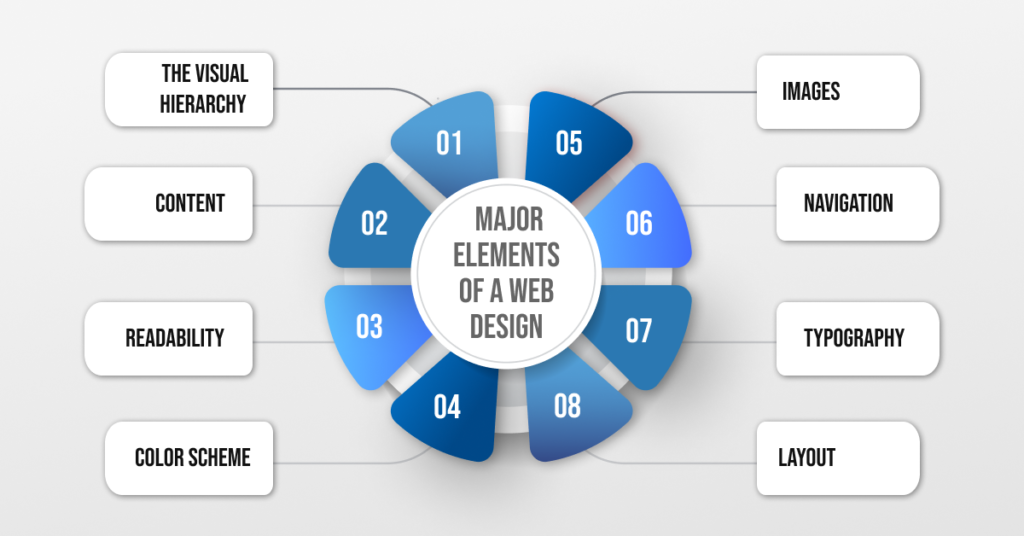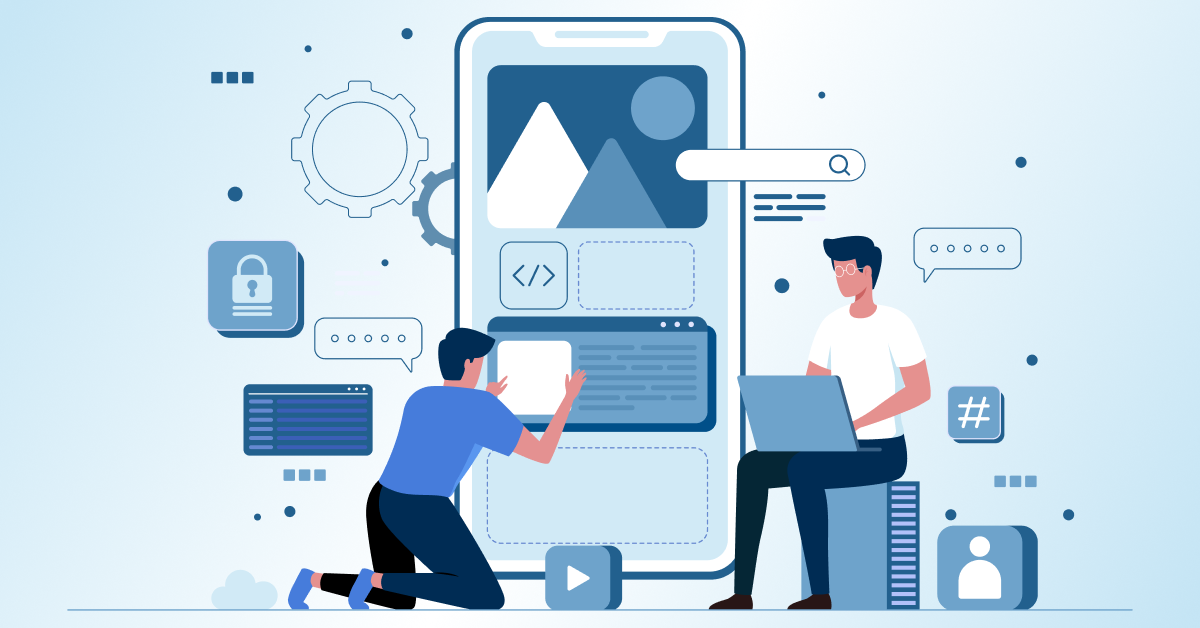
The Best Guide to Web Designing in 2022
-
By Paramjit Singh
-
7th April 2022
If you find it fascinating how a website appears, you need to conduct your analysis to the core of it. You need to know that an artistic web designer is behind the same. Before diving more into web designer, let us understand web designing.
Web designing is the sketch of the website shown on the web or the internet. It is a blueprint of websites and web pages to show its brand. It also ensures a user-friendly experience. The major elements of web designing include:
One, is how the website appears
Two, the design of the website
These two elements are constant, whether the design is for the website, mobile app, or sustaining a webpage. So you can get your hands on web designing to create a website for your business.
Here in this blog, we will learn all about web designing.
What Is the Purpose of Web Designers?
The major role of web designers is to make sure that their website is attractive. To be precise, it has to be appealing. The reason behind the same is to attract the target audience.
With the evolution of technology, the role of web designers has changed slightly. Nowadays, one expects a web designer to have several other aspects. These aspects include search engine optimization, user experience design, and website maintenance. With the origin in demand of these aspects of web designers’ role, there is an additional need for web designers to broaden their skills.
The role of a web designer
A web designer recognizes the goals of a website or a webpage. They help in promoting accessibility for all possible users. Let us have a look at the process.
– It includes the organization of the content and images around the sequence of the pages.
– It also includes combining the applications and other interactive elements.
Experts who perform this procedure are web designers.
Roles and responsibilities of a web designer
1. The major role of a web designer is to choose a font that is easy to read.
2. The designer is also responsible for picking the best color scheme which makes the website attractive.
3. They handle the brand’s identity with the choice of colors, layout, and fonts.
4. A web designer maps the structure of the website. This structuring is to ensure built-in navigation.
5. The person is in charge of putting the logos, images, text, applications, and other elements.
6. One expects web designers to use coding languages to make the layouts. Also, he manages the styling of the pages. Therefore, a web designer should be well versed in coding languages such as HTML CSS. These are the basic requirements when it comes to designing a web page.
7. A web designer is accountable for making advanced pages and websites for mobile and desktop viewing.
These are the major roles and responsibilities of a web designer.
Methods of Web Designing
1. Customer Satisfaction
– The first method is adaptive design,
– The second method is responsive design.
In the former, one uses the standard screen sizes for framing and designing the layout.
In the latter, the content moves statistically. But, of course, this completely depends on the screen size.
Web designer experts make use of the various steps to make different websites. This is according to the needs and demands of the different clients.
What Are the Major Elements of a Web Design?

The process of designing the web is quite flexible. This allows the designers to adjust to any preferences. There are several standard components of every web design. These components include the following;
– The visual hierarchy
– Content
– Readability
– Color scheme
– Images
– Navigation
– Typography
– Layout
Let us have a look at each element in brief.
1. The visual hierarchy
It is an order in which the end-user will gather the information from the site. The web designer makes it by using a visual pattern for the online website. The visual pattern is the way that manages the behavior of visitors visiting the site. For instance, the F-Patterns highlight the top horizontal section of your website. Most designers happen to place the brand logo and navigation and the search bar here. These are a few elements that inspire brand recognition.
2. Content
The content refers to the readable information present on the website. It is one of the major elements of the website. The reason behind this is that users want to get information immediately. If the website’s content can communicate in no time, then it will grab the attention of the users. In layperson’s language, the better the content, the better the conversion rate into leads. The web designer can meet this by making use of an engaging tone. Also, one needs to understand the importance of right and authentic information on the webpage. As a designer, one must ensure that the content put on “about us” and “contact us” is correct!
3. Readability
As a designer, you need to understand the role of readability. The concept of readability refers to the ease and comfort one gets while reading a webpage. This means that the content present on the web page should be easy to understand and read. The user should not find difficulty in reading and grasping the same. If the readability is great, it will automatically improve the UX experience. As a web designer, you can enhance readability by using the appropriate pixels and size of the text. Not to overlook, the disparity between the background of the site and text colors also plays a major role in improving readability.
4. Color scheme
The combination of the colors on the website depicts and says a lot about the brand it represents. As a web designer, you need to use the right colors that represent the industry. For instance, you can pick a dominant color and a couple of other colors to create a palette. You can choose between monochromatic, analogous, or complimentary. As a designer, you need to focus on the ideology of colors the users are most attracted to.
5. Images
Images include pictures, photographs, illustrations that visually depict the information. As a web designer, to create the best effect, you can use images that go with each other. Users get attracted to the visual representation more than the textual part. Thus, make sure that the pictures you use tend to attract and target the right audience.
6. Navigation
Navigation refers to a user’s tools to navigate anywhere to a particular website. One can find these tools either in a header, footer, or even the body of the website. The placement of these tools depends on the layout and the design of the website. However, these tools are important as they steer the audience to the information they want to grasp.
Web designers can use different designs and layouts for navigational tools. For example, they can incorporate buttons and one-click arrows to take the users to the top of the page.
7. Typography
It refers to the type and style of the font in which the text appears on the website. Designers can use a combination that attracts users and is easy to read. Depending on the brand’s purpose, the site can either have serif fonts, while others can have non-serif fonts.
8. Layout
This is the most important part for a web designer where he has to put his attention. The layout refers to the style in which material or content is displayed. Therefore, the design of the layout has to be simple, attractive, and intuitive.
Designers tend to create special layouts for different display screens. This refers to mobile display screens or desktop screens. With the advancements in technology, it has become very important to have the website accessible on a mobile phone. The reason behind the same is that users prefer to open and access the website from their cell phones in today’s era. For a mobile-friendly website, a designer needs to make sure that he uses a responsive template. This template will ensure that the website adapts to any screen, i.e., desktop or mobile.
What Is the Use of a Web Design?
A web design is vital for meeting several tasks and goals. These include the following:
1. Customer Satisfaction
An excellent web design will have a positive impact on the users. Customer satisfaction plays an important role in improving the UX. The better the UX, the better the relations will be with online website visitors visiting the site.
2. Search engine optimization
Search engine optimization refers to using the right strategies to help a website rank. Web designers happen to code the information so that the search engine can read it with ease. This will help enhance the business as the site ranks in the top searches.
3. Compatible branding
Branding refers to promoting the product with a different style and design. Web designing will play an important role in helping brands. It will create a crisp, clear promotion for their business.
4. Mobile responsiveness
Mobile responsiveness refers to the optimization of the layout of the website. To be precise, it means that the website’s layout has optimization in a way that it can adapt depending on the screen size. A web designer will ensure that the site is easy to navigate and view on any screen. If the website is mobile responsive, it will target more audiences and help with leads.
5. Technical efficiency
This term relates to making a better experience for customers and users on the website. For example, web designers can get technical efficiency by using clean codes. This will improve the loading time of the website. Also, it will enhance dynamic images and graphics. All this will lead to a better UX.
6. Conversion
The whole purpose of a website is to improve conversion rates. To enhance this, web designers can make use of the best strategies. Conversion takes place when a user completes a specific task on a website. The user has to be on the website for a longer period for this to happen. Web designers can use the best techniques to make the website appealing enough to hold the user’s attention. With this, there are chances they will click on the CTA and exchange valuable information.
7. User experience optimization
Web designers can always conduct an audit and understand how people engage with the website. This will help the designers to understand which pages have fewer engagements. With the help of an audit report, they can start working on pages with less traffic. This will help you enhance the web pages and improve the UX.
8. Improve sales
By now, you must have understood the importance of UX. The better the user experience on the page, the better the conversion rates. Web designers need to ensure that they work and make use of the right techniques, including
– Color scheme
– Clean coding
– Responsive website
These things will positively impact the website and thus better sales.
These are a few reasons why web design is important.
FAQs:
1. Is it a good time to become a web designer in 2022?
Before you decide and jump into a new career, you need to look at the path you are jumping into. There are certain aspects that one needs to consider. For instance, look at the job opportunities in the same field after covid. Not to overlook, the pandemic has had adverse effects on careers and job opportunities. Thus, before you conclude, you need to consider all this.
2. Are web designers in demand right now?
No matter what goes around in the world, technology is boundless. We rely on technology for several matters, and web designers play a vital role in that technology. Web designers design it, and also they are behind the constant efforts to make it look so flawless.
This is a handy guide to web design in 2022. With the advancements in technology, there is always a change and development in how web designers play their role in improving conversion rates each year. Thus, it is always better to get in touch with a prominent web designing agency like Deftsoft and get ahead of your competitors.

Paramjit Singh
 7th April 2022
7th April 2022




